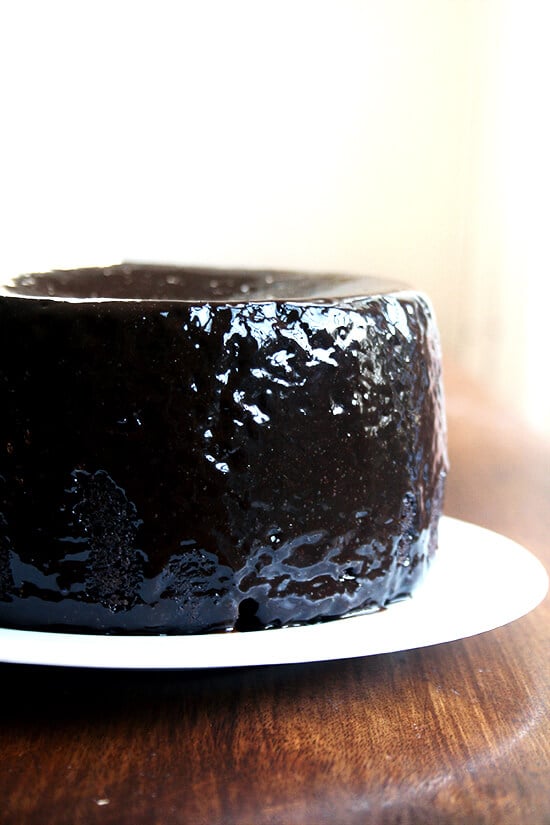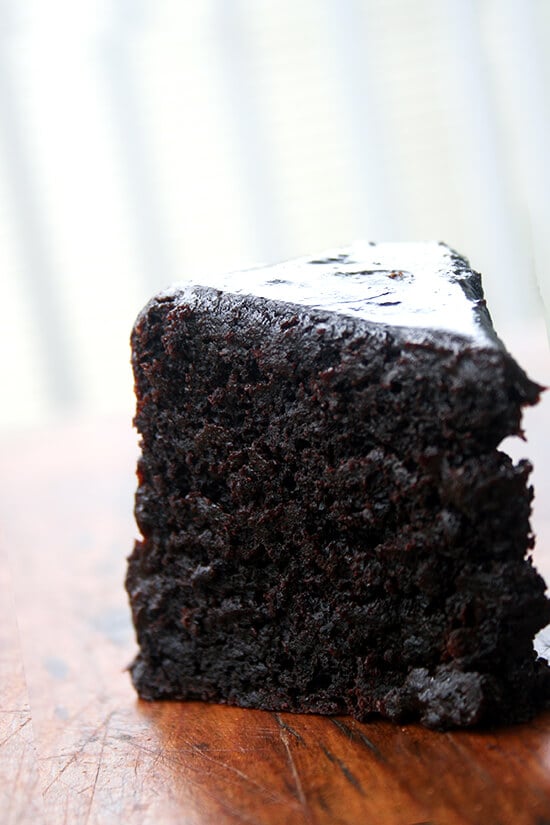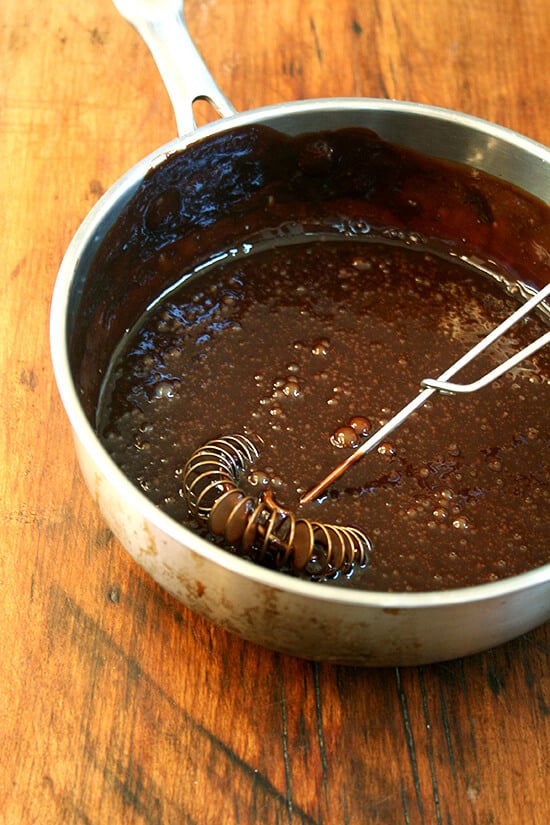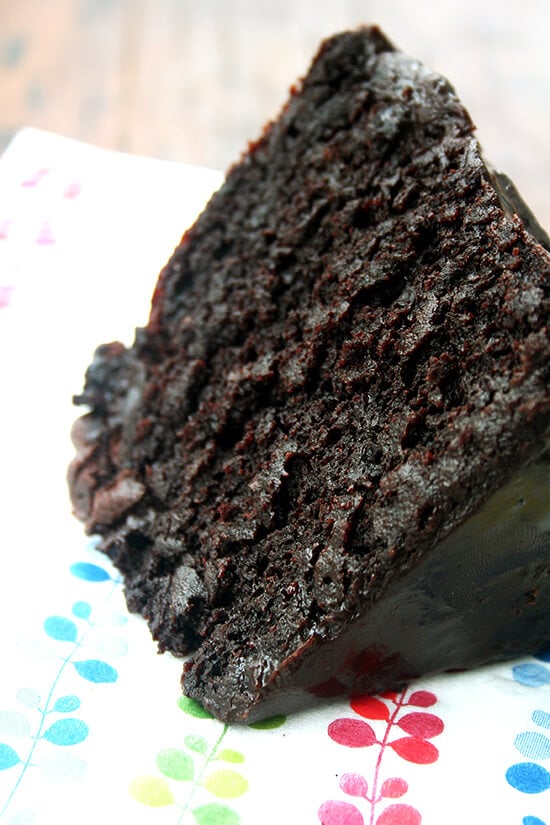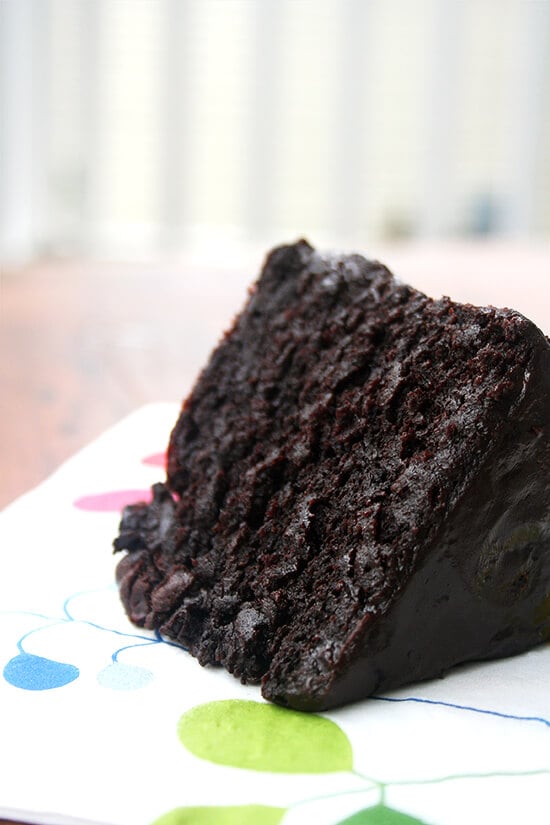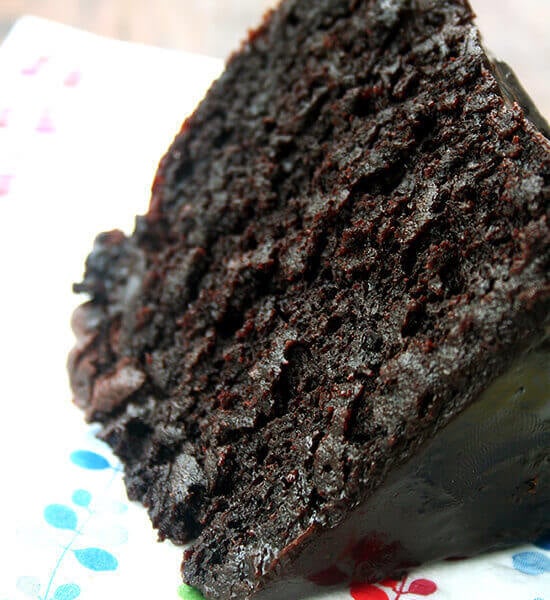Why Is This Cake So Good?
A few things:
The difference between Dutch-process and natural cocoa powder:
This info comes from Regan Daley’s In the Sweet Kitchen:
Natural cocoa powder is produced if virtually all of the cocoa butter is removed from the cocoa liquor, leaving a dry cake that is then ground to a fine powder. Natural cocoa powder is quite acidic, so can be used as the necessary acid to activate baking soda in leavened baked goods, if present in sufficient quantity. Because of its high acidity and unpalatable bitterness, natural cocoa powder is best used only in baked or cooked desserts. Dutch-process cocoa (also called alkalized cocoa powder) has been treated with a small quantity of an alkaline solution to reduce the natural acidity. The process darkens the cocoa’s color, making it rich, often redder brown, and gives it a smoother, more mellow flavor. Both natural and Dutch-process cocoa have had about 75% of the cocoa fat removed. Although some recipes can be made with wither form of cocoa powder, many rely on the properties of one or the other. For this reason, be careful when substituting Dutch-process for natural and vice versa. In recipes for baked goods using baking soda as the leavener in which no other acid is present, Dutch-process cocoa is not appropriate as it does not contain sufficient acid to activate the baking soda. (You could use Dutch process for natural cocoa but an additional acid such as cream of tartar would need to be added.) Similarly, using natural cocoa powder in a recipe originally calling for Dutch process cocoa may cause the mixture to become overly acidic. Adding a small amount of baking soda, or increasing the amount already called for, will compensate for this. Natural cocoa is better for brownies, old-fashioned chocolate cakes and simple chocolate cookies. Dutch-process cocoa, more palatable than natural cocoa when raw, is good for icings, custards, creams and sauces that will not undergo further cooking. It has a more subtle, delicate flavor, one well suited to many to many elegant European-style cakes, biscuits, pastries and creams, and in any recipe where an overt, sharp chocolate flavor would overpower more delicate flavors. It is very good in nut cakes and ice creams, where a refined, un-bitter chocolate taste can complement the soft flavors of the other ingredients. If the cocoa will be tasted raw, as it is when dusted on cakes, cookies or truffles, opt for Dutch-processed. If the recipe is for a traditionally rich and fudgy baked good, use the stronger flavor of natural cocoa powder.
4.8 from 67 reviews Notes:
The original recipe calls for making a chocolate ganache, which sounds heavenly, but I have always adored my grandmother’s chocolate glaze recipe — it’s called black velvet icing and it contains eggs, which is odd, but it’s so good — so that is the one I use. If you want to use Gourmet’s chocolate ganache, find it here. Some commenters have found the amount not to be enough for a full cake, so I’ve updated the quantities below to be a double batch, which should leave you with more than enough icing. If you want to make a half recipe, see this post: Gourmet’s Double Chocolate Cake, Revisited. I love these 6-inch cake pans for making half recipes of all sorts of cakes, namely this one. You need two.
3 ounces (85 g) fine-quality semisweet chocolate 1 1/2 cups hot brewed coffee 3 cups (648 g) sugar 2 1/2 cups (320 g) all-purpose flour 1 1/2 cups (144 g) unsweetened cocoa powder 2 teaspoons baking soda 3/4 teaspoon baking powder 1 1/4 teaspoons salt 3 large eggs 3/4 cup vegetable oil 1 1/2 cups well-shaken buttermilk 3/4 teaspoon vanilla
for the black velvet icing (*updated to a double recipe April 2020, see notes above):
8 oz semi-sweet chocolate a heaping 1/2 cup of confectioners’ sugar 6 eggs, well beaten 8 tablespoons butter, room temperature
